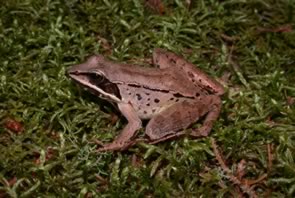
Rana sylvatica
Photo by JD Willson
Description: This attractive, medium-sized frog may be brown, gray, reddish or pinkish with a distinct dark brown mask and prominent ridges running along each side. Females are larger and sometimes more colorful than males.
Habitats and Habits: Fast and agile leapers, wood frogs occur throughout much of the Mountains and western Piedmont. A disjunct population — probably an ice age relict — persists in Hyde and Tyrrell counties in the Coastal Plain. As adults, wood frogs are almost exclusively found on land, inhabiting moist woodlands. In parts of the Mountains, they may be seen on roads on rainy nights most of the year.
Wood frogs usually breed in temporary woodland pools. They are explosive breeders, gathering in large numbers for breeding frenzies that may last only a few days. The large, globular egg masses are usually attached to sticks or aquatic vegetation. Often, many egg masses are deposited together in a small area; this may help protect them from freezing. The eyes of wood frog tadpoles are situated farther toward the sides of their bodies than those of our other “true frog” tadpoles. Tadpoles transform in about eight weeks.
Call: Wood frogs breed in winter, most often in February. Their call, a raspy “caw-aw-awk,” has been compared to the vocalizations of chickens or ducks.
Frog Fact: Wood frogs are extremely cold-tolerant and have been known to survive freezing of their body tissues.
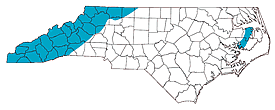
The shaded region represents the range of the wood frog in North Carolina.
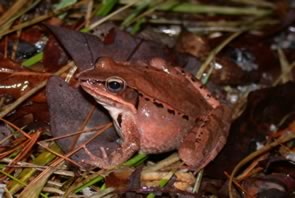
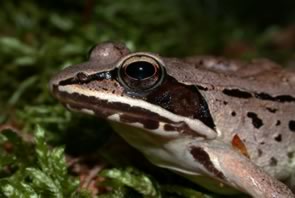
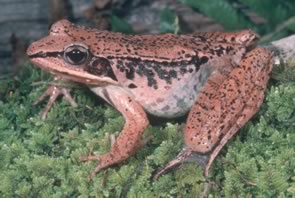
Wood frogs have a dark mask behind the eye.
Photo
by JD Willson
Photo by RW Van Devender
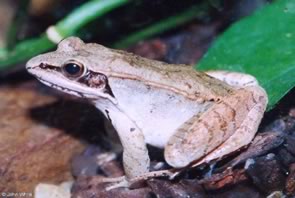
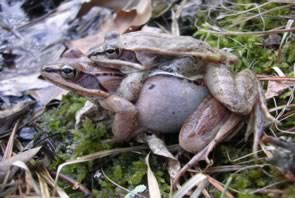
Photo by Kristine Grayson
This website created by: Grant Connette and Evan Eskew.
For comments or questions contact M. Dorcas: midorcas@davidson.edu.
M. Dorcas homepage: http://bio.davidson.edu/dorcas
Davidson College, Davidson, North Carolina 28035-1719.
Text and maps from: Dorcas, M. E., S. J. Price, J. C Beane, and S. S. Cross. 2007. The Frogs and Toads of North Carolina. North Carolina Wildlife Resources Commission, Raleigh, NC. – Copyright by Michael E. Dorcas
Call provided by Walter Knapp.
Partial Funding for this website provided by a Associate Colleges of the South, National Science Foundation, and Duke Energy.
